
Misusing a Disability Placard in California
Disability placards aren’t something everyone in California can appropriate and use for their own purposes. Getting caught misusing a disability placard in California can land you on the wrong side of the law.
If you think you can misuse a disability placard and not get caught, you should think again. It’s easy for police to spot placard misuse. When they discover someone is misusing the placards, the police are usually quick to take action.
Disability placard misuse is dealt with in Vehicle Code 4461 VC. The law has multiple examples of how disability placards are not to be used. One such example is, “A person shall not lend a certificate of ownership, registration card, license plate, special plate, validation tab, or permit issued to him or her if the person desiring to borrow it would not be entitled to its use, and a person shall not knowingly permit its use by one not entitled to it.”
Other ways a disability placard can be misused include:
- Continuing to use a disability placard that has expired or that has been revoked
- Borrowing someone’s vehicle and using their placard even though you’re not disabled and they aren’t in the vehicle with you.
One could consider California’s Vehicle Code 4461 VC to be one of California’s wobbler laws, but instead of shifting between a felony and a misdemeanor, it could be handled as an infraction or a misdemeanor.
A majority of cases involving the misuse of a disability placard are handled as an infraction. This is good news since there is no jail time, only a fine. That being said the fine can be really steep. The amount can range from $250 to $1,000.
If the case is handled as a misdemeanor, jail will be one of the possible consequences. The maximum sentence is six months in jail and/or a fine that could be as large as $1,000. In some situations, the judge will order misdemeanor probation rather than sending the defendant to jail. It’s also possible that the defendant will have to perform some type of community service and/or seek counseling.
The good news is that you’ll have nothing to worry about provided you are in legal possession of a disability placard and are good about making sure it never expires.

What are Considered Attempted Crimes in California
We’ve all heard stories about people who are charged with attempted crimes such as attempted murder, attempted assault, or attempted burglary. While we’re familiar with the concept of attempted crimes, few of us fully understand how it’s possible to be charged and even convicted, of a crime that didn’t actually happen.
The issue of attempted crimes in California is discussed in Penal Code 664 PC. The law defines attempted crimes as any instance when a person makes a concentrated effort to pull off an actual crime and break the law. The fact that the intent was real, even if the person failed to completely follow through in their attempt to break the law.
The law specifically states that “every person who attempts to commit any crime, but fails, or is prevented or intercepted in its perpetration, shall be punished where no provision is made by law for the punishment of those attempts.”
There are several examples of attempted crimes. These examples include:
- A victim escaping and fleeing from a sexual assault scenario
- Breaking into a house, but being stopped before anything is actually stolen
- A gun backfiring during what would have been a murder
The interesting thing about the way California handles attempted crimes is how the sentencing is handled. The rule of thumb for attempted crimes in California is that the maximum sentence for a guilty conviction will be one-half of the maximum sentence had the accused been able to complete their crime.
Composing a successful attempt for attempted crimes in California generally depends on how much evidence the police have gathered, the type of attempted crime the accused is facing, and how close they came to committing the crime.
Some successful defenses that have been used in the past include:
- That while the accused may have considered the crime, there is no evidence that they would actually carry through with it
- The accused was framed
- The accused didn’t realize that they were about to break the law
Whether the attempted crime is handled as a misdemeanor or a felony depends on how the charges would have been handled had the law actually been broken. This means that there are both misdemeanor and felony attempted crime cases going through the California legal system all the time.
While some maintain that it’s unreasonable to charge and convict people of attempted crimes in California, there is little chance that things will change any time soon. California lawmakers hope that by continuing to pursue attempted crime cases they will:
- Discourage people from breaking the law
- That people realize that there are consequences for actions, even if the actions aren’t fully carried through
The best way to make sure you’re never charged with an attempted crime in California is by never even planning a hypothetical crime.
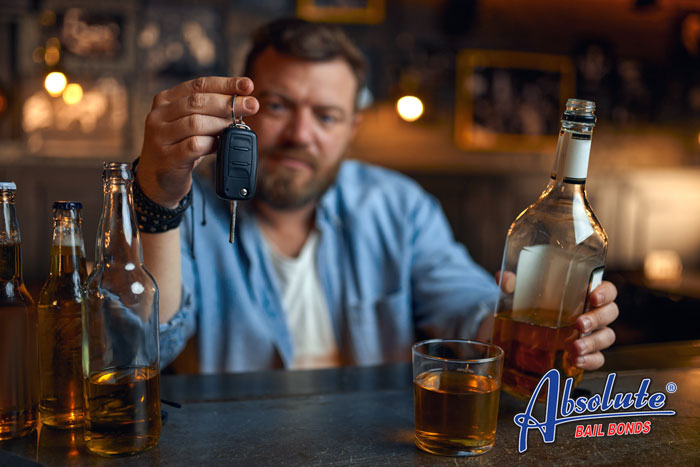
What Happens if You Hurt Someone in a Drunk Driving Accident?
Driving while drunk isn’t just frowned upon in California, it’s illegal. While you’re allowed to go out and have a good time, if that good time involves drinking alcohol, you need to pay careful attention to how much you consume. As soon as your blood alcohol level reaches 0.08%, you’re no longer legally allowed to drive.
What Happens if You Get Caught Drunk Driving in California?
Don’t assume that just because you’ve never had a drunk driving offense that you have nothing to worry about the first time you’re charged with drunk driving in California. Even though it’s your first offense, it’s still going to have a massive impact on your immediate future.
First the fines. California law is written in such a way that in addition to being required to pay anywhere from $390-$1,000 in fines, you can also pay something that’s called penalty assessments.
Once you’re convicted of first-time drunk driving the judge has the option of sentencing you to jail time. This is in addition to the fines. While there’s no mandatory jail time for a first-time drunk driving conviction, the judge could decide that you need to spend 48 hours to 6 months in jail.
Plan on losing your driving privileges. As soon as you’ve been officially convicted of your first DUI, your license will be suspended for six months. If you refused to submit to a bloc alcohol concentration test, an administrative license suspension could also be enforced which would mean losing your license for a full year.
What Happens if Someone is Injured Because you Were Driving Drunk in California
There’s no way of getting around the fact that if you injure someone while you’re driving drunk, you’ll face far more serious consequences for your actions than if you’re simply pulled over. How severe those additional consequences depends on several different factors including:
- If you have a previous history of DUI
- How severely injured the victim is
- Additional circumstances surrounding the incident
In California, DUIs that involve injuries are treated as wobblers, meaning they can be handled as either a misdemeanor or a felony. If the circumstances surrounding the incident indicate that your case is a felony, you could be sentenced to up to four years in prison and be required to pay a maximum fine of $5,000.
In addition to facing criminal charges, you’ll also likely be named the defendant in a civil case. During the civil case, your victim will seek financial compensation for both their medical expenses and their emotional/physical pain and suffering.
Considering the negative impact a DUI has on your life, it’s in your best interest to always have a designated driver whenever you go out and drink.
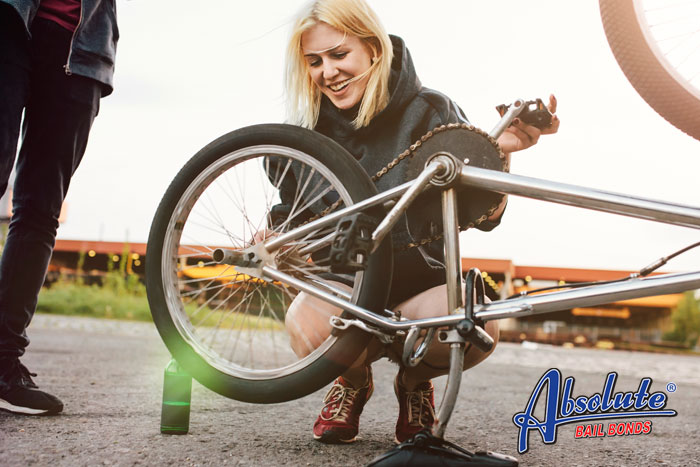
Riding Your Bike Under the Influence of Drugs or Alcohol
The rising fuel costs are causing many of us to take a second look at our bikes. Now they not only seem like a pleasant way to stay in shape but also a viable way to ease transportation costs. Not only can you use your bike to get from your home to your workplace, but you can also use it to go out at night. Not paying for gas means you’ll have more money in your pocket for drinks, and since you’re cycling rather than driving you don’t have to worry about watching how much you drink.
California law prohibits you from driving and cycling while under the influence of drugs and alcohol.
California is so serious about making sure that you don’t bike while under the influence that they created an entire law that deals with anyone who is under the influence when they mount their bike.
The law is California Vehicle Code 21200.5 VC and it states that:
“Notwithstanding Section 21200, it is unlawful for any person to ride a bicycle upon a highway while under the influence of an alcoholic beverage or any drug, or under the combined influence of an alcoholic beverage and any drug. Any person arrested for a violation of this section may request to have a chemical test made of the person’s blood, breath, or urine for the purpose of determining the alcoholic or drug content of that person’s blood pursuant to Section 23612, and, if so requested, the arresting officer shall have the test performed.”
The good news is that while the law prohibits you from cycling while under the influence (CUI) the fallout from doing so is nowhere near as life-altering as getting a DUI.
When you’re charged with a CUI you will only face misdemeanor charges. If you’re convicted of CUI in California you won’t spend any time in jail and the maximum fine you’ll face is $250.
While the potential fallout from a CUI isn’t as severe as what you’d get if you were convicted of a DUI, that doesn’t mean you shouldn’t take the situation seriously. The first issue is that you will have a criminal record that shows an alcohol-related offense.
The second thing to consider is that if you’re cycling under the influence and accidentally hurt someone you will face additional legal and civil penalties that could have a long-term negative impact on your life.
While it’s okay to go out and have a good time, when all is said and done, it’s better to have a designated driver than to cycle home after an evening of fun and drinks.
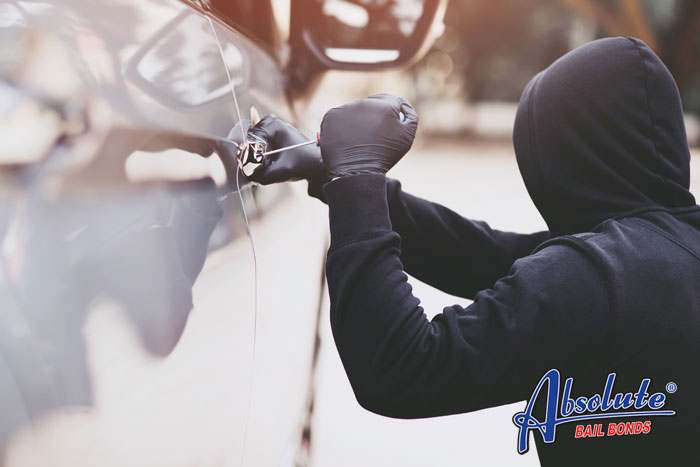
California Cities Where Your Car is Most Likely to be Stolen
Car thefts have become an increasingly big headache for police departments across the United States. Shortly after the pandemic started in 2020, law enforcement agencies throughout the United States noticed they were responding to more stolen vehicle reports than they had in past years.
“Auto thefts saw a dramatic increase in 2020 versus 2019 in part due to the pandemic, and economic downturn, law enforcement realignment, depleted social and schooling programs, and, in still too many cases, owner complacency,” David Glawe, president and CEO of the NICB, stated in a Forbes interview.
Many of the stolen vehicles were taken directly from the owner’s regular parking space and since many of the drivers had little use for their vehicle while things were shut down, it sometimes took before they discovered that their vehicle was no longer where they’d left it. The National Insurance Crime Bureau (NCIB) reported that 10.9% more cars were stolen in 2020 than in 2019. Throughout the United States, 880,595 vehicles were reported stolen during 2020.
While auto thefts skyrocketed throughout the United States, California was hit the hardest. They led the nation in pandemic car theft. Throughout 2020, reported that 905.41 vehicles were stolen for every 100,000 of the state’s residents.
While no part of California is completely free of car thefts, there are some cities where you’re car is at an increased risk of theft.
Commerce, CA
At first glance, Commerce seems like a sunny, cheerful town in L.A. County, but dig just a little deeper and you discover that not only does Commerce have more car thefts than any other California city, but that it also has the highest overall crime rate. The average crime rate for Commerce, CA is 244 percent higher than other, similarly-sized cities. Many of these crimes involve car theft. In Commerce, the car theft rate is 2,742 thefts for every 100,000 Commerce residents.
Oakland, California
The city of Oakland is nestled up to San Francisco. Considering the city has a reputation for violence and gang-related crime, it shouldn’t come as a surprise to learn that Oakland has a crime rate that’s a whopping 121 percent higher than California’s average. It also shouldn’t come as a surprise that car theft is a huge problem in Oakland. The issue of car thefts in Oakland recently gained some media attention after a man who was attempting to halt some car thieves was fatally shot
San Pablo, California
Many residents of San Pablo struggle to make ends meet. They also struggle to prevent their vehicles from getting stolen. Car thefts in San Pablo are particularly common near the local Contra Costa College and the local casino.
What steps do you take to keep your car safe when you’re visiting one of these three California cities?
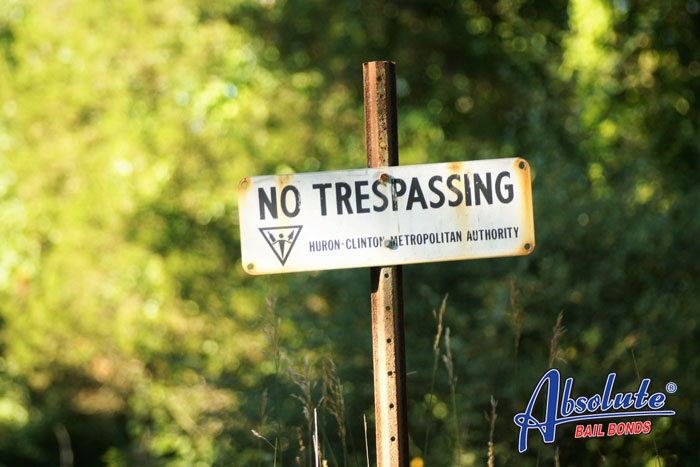
Consequences Of Aggravated Trespass in California
Most people don’t know that there’s such a thing as aggravated trespass in California until they see it’s one of the criminal charges they’re facing. Aggravated felony trespass is addressed in Penal Code 601 PC. The fact that you’re facing an aggravated trespass charge indicates the police have gathered evidence that suggests you threatened to physically injure someone and used the threat to gain entrance to their home/workplace/etc. without them granting permission. It should come as no surprise to learn that aggravated trespass is far more serious than a standard trespassing charge.
It’s important to note that sometimes the threat of physical harm and the actual trespassing act don’t always have to happen at the same time for a charge of aggravated trespassing to be filed against you. If you have threatened violence within 30 days of the trespassing act, aggravated will be added to the charges. An example of this is threatening to attack an ex and then having a knife/hammer/bat/gun on hand when you unlawfully trespass on your ex’s property a week later.
Given how serious aggravated trespassing sounds, many people are surprised to learn that it is one of California’s wobbler offenses. That means it can be handled as a misdemeanor or a felony. Generally, the exact circumstances of the threat and the accused’s conduct while they were trespassing determines if they face misdemeanor or felony charges.
A person convicted of misdemeanor aggravated trespass could be sentenced to as much as one year in a county jail and/or misdemeanor probation. For a felony conviction, the maximum sentence is three years in a county jail and/or felony probation. It’s worth noting that the felony conviction could negatively impact your right to own a gun in California.
While an aggravated trespassing charge seems grim, some defenses can be effectively used.
The first defense is that the accused owns the property or works on the property where they allegedly trespassed. It’s impossible to trespass on a property that’s legally your own. The law about trespassing/ownership/property rights does get confused if the property is being leased by someone else.
Another defense that’s been successfully used in aggravated trespassing cases is that no credible threat was made. In these cases, the burden of proof rests on the prosecution’s shoulders. If they can’t prove that there was a credible threat, the charges will be reduced to standard trespassing.
There is a time limit connected to aggravated trespassing charges. California law dictates that the threat and the trespassing act must happen within 30 days of each other.
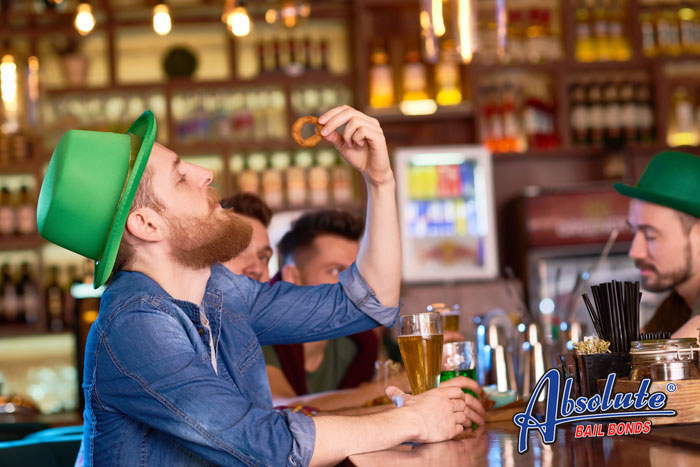
Be Smart. Don’t Drink and Drive on St. Patrick’s Day
Many people spend the entire year looking forward to St. Patrick’s Day. The holiday is a huge deal in some locations, particularly those that have a large Irish American population.
The great thing about St. Patrick’s Day is that the holiday is basically a 24-hour party. Many bars and restaurants run all sorts of special. Many cities host parades. Sports teams often wear special uniforms and have an assortment of events planned for the holidays.
It’s also a day when many people are arrested for drunk driving. Nothing ruins an otherwise fun day as getting arrested because you made the mistake of sliding behind the wheel after you’ve had to
much to drink on St. Patrick’s Day.
The police and court officials don’t care that you simply wanted to have a good time on St. Patrick’s Day. Their main concern is keeping California’s residents safe from drunk drivers.
Getting arrested for drunk driving on St. Patrick’s Day will ruin your immediate future. The judge won’t go lightly on you because you wanted to have a good time and celebrate a saint. If it’s the first time you’ve ever been convicted of drunk driving in California
If you’re convicted of DUI for a St. Patrick’s Day incident you will be charged with a misdemeanor and could spend up to 6 months in a county jail and be ordered to pay a $390-$1000 fine.
The sentencing for subsequent DUIs becomes increasingly more severe. If someone is injured as a result of you driving while intoxicated, you will face additional charges and also likely be named as the defendant in a civil lawsuit.
The best way to avoid being arrested for a DUI on St. Patrick’s Day is making sure you have a designated driver or calling a taxi/rideshare.
What you shouldn’t plan on doing is sleeping it off in your car. While this may seem like a perfectly good idea, if you’re spotted getting into your car after you’ve had too much to drink, there’s a chance an officer will decide that you intended to drive and arrest you. While a conviction for the intent to drive while intoxicated isn’t nearly as serious as an actual DUI, it’s still intense. The rule of thumb for an intent to drive drunk conviction is that the sentence is half of what you would get if you were charged with an actual DUI. So instead of serving 6 months in jail, the judge could sentence you to three months and/or charge you a $195-$500 fine.

Laws About Hitting a Pedestrian in California
California has a reputation as being a great place for pedestrians. The weather makes it possible for pedestrians to walk year-round and the state has done a wonderful job of creating places where pedestrians can stroll without encountering traffic. While pedestrians are invited to enjoy the benefits of walking, it’s important to understand that if you decide to stroll, there’s a chance you could be hit by a car. It’s equally important to understand that the odds of you having a pedestrian-car incident have increased in recent years.
Studies indicate that life for pedestrians is becoming increasingly dangerous. The Governors Highway Safety Association recently gathered data that indicated that the number of pedestrian deaths in the United States increased by 35 percent between 2009 and 2017. According to Triple-A, things are getting worse. The organization reported that from 2010 to 2019 pedestrian deaths increased by 46%.
It doesn’t appear that there is one particular reason pedestrian deaths have risen so much. Some feel that the fact that drivers are getting older could play a role. Another issue is the fact that drivers continue to ignore warnings about using cell phones while driving. It’s worth noting that not all pedestrian/car incidents that involve phones aren’t because the driver was using their phone. In 2010, an estimated 78,000 pedestrian injuries were the direct result of the pedestrian using their phone and not paying attention to their surroundings.
If you drive in California, you have a responsibility to look out for pedestrians. It’s an aspect of being a good defensive driver. Since California has a reputation for being such a great pedestrian state, you must assume that you’ll see a few people walking whenever you drive.
When you do see people walking, automatically check how you’re driving. The last thing you need is to be accused of reckless driving that resulted in you striking a pedestrian. It doesn’t matter if you fail to yield, are speeding, or are distracted, if you strike a pedestrian with your vehicle and there’s proof that you’re at fault, you could face steep fines, jail time, and civil lawsuits.
When you see a pedestrian walking, particularly if they are using their phone, give them as wide a berth as possible. Don’t automatically assume that they will stop at crosswalks, pay attention to no crossing signs, or that they won’t suddenly veer off the sidewalk.



